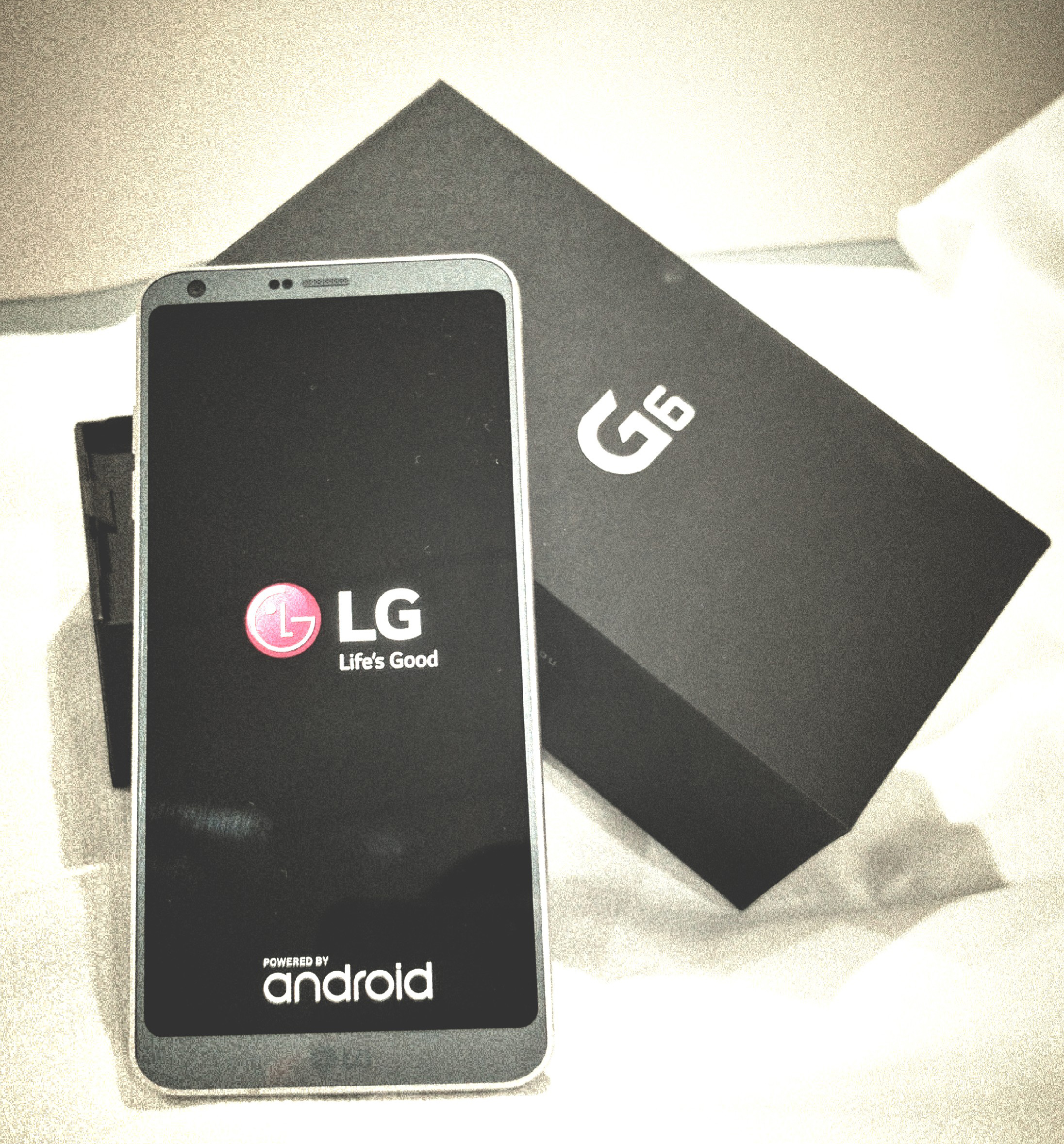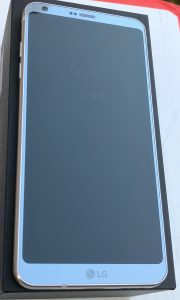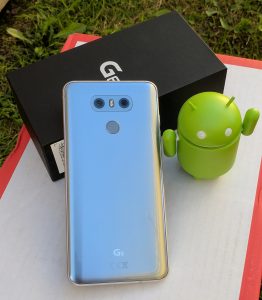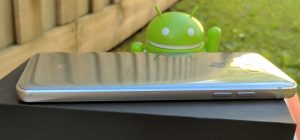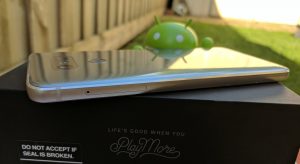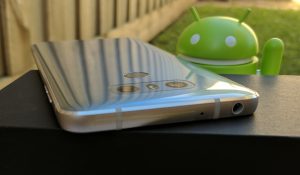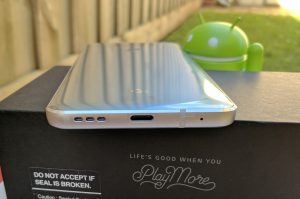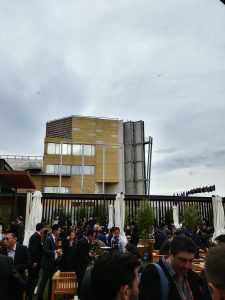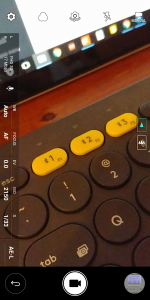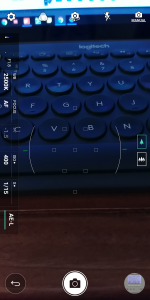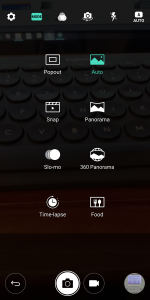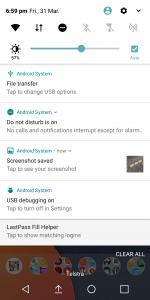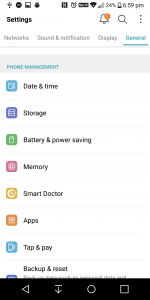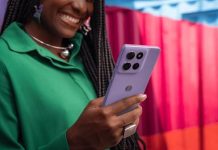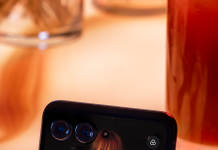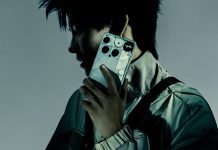
2016 was not a great year for LG. Their G5 was not well received by consumers and their “Friends” ecosystem was a flop. They did partially hit back towards the end of the year releasing the first phone that shipped with Nougat out of the box — the V20.
Enter 2017 and LG have built up the hype surrounding the LG, promising so much with this new, innovative display. After a couple of days using the LG 2017 flagship here are my initial thoughts on it — remember I have only had the phone for two days so my thoughts may change but first impressions are often fairly accurate.
Design
Display, display, display. This phone is all about the display. LG have managed to pack a 5.7in display into a body that is smaller than the body of the 5.5in display Pixel XL (HTC — take note, this is one reason why you are failing, we hate bezels). The phone is only 148.9 x 71.9 x 7.9 mm.
The phone itself is a metallic body with a Gorilla Glass 5 back panel. The Gorilla Glass back panel is an interesting choice and to me makes the back seem plastic, but it does give the phone a bit of “bling”.
The best thing about the build is how comfortable it feels in the hand. The 18:9 aspect ratio of the display combined with some of the smallest bezels we have seen in Australia make it thin and easy to hold.
Hardware
LG wanted to get their phone out this quarter, before Samsung and hence had to opt for the Qualcomm MSM8996 Snapdragon 821, a slightly faster version of the processor that is in the Pixel XL. Combined with 4GB of RAM it is no slouch although it does not have the speed of the Pixel XL. The phone has only 32GB of internal storage but does have microSD capabilities.
The display is a 1440 x 2880 pixel (564 ppi) IPS LCD protected by Gorilla Glass 3. The display does not have to vibrant colours of an AMOLED display but seems a lot more natural. Powered by a 3300mAh battery it does seem to struggle to last a full day, unlike the larger batteried Pixel XL.
There is a headphone jack, USB 3.1 Type-C connector and fingerprint sensor on the back. Just like I found with the V20, the sensor sits fairly flat on the back panel and I often have trouble locating it. Hopefully this improves the more I use it.
Camera
The rear camera is the feature here, being a dual 13MP camera. One camera is f/1.8 aperture with OIS and 3-axis phase detection autofocus. The second camera has an aperture size of f/2.4 and does not have autofocus. There is a dual-LED flash and face detection.
I have not had much of chance to take many photos so have grabbed them from the piece Chris did when he compared the cameras of the LG G6 and the Huawei P10 to the Google Pixel.
For me, from all those photos the G6 came out as the best overall, better in more photos than what the Pixel was. In 2017, with high end cameras I feel that we are splitting hairs. They all take high quality images photos — anyone remember back to the Galaxy Nexus and the woefully inept camera that had?
The camera app is fantastic and offers a lot of manual control over your images than any other stock app I have used. I do not see a need for a manual camera app that I normally have to install to get the fine grain control that I occasionally like when pretending I know what I am doing with a camera. I am really looking forward to sinking my teeth into the app a lot more over the coming week to see what I can do with it.
While the manual controls are great I feel that LG have missed the boat a little bit. Huawei included a lot of cool features such as bokeh effect, altering focus length post image capture and a monochromatic capture effect in their recent dual camera phones. LG have a few colour filters and that is about it. I feel that they have sold their camera short. They have put some great camera hardware in the phone but missed the chance to fully utilise the dual cameras in anything other than widescreen.
Software
The G6 runs 7.0 out of the box but unfortunately LG have removed some of the cool Nougat designs and functions in preference to their software skin. While their skin is less offensive than in previous incarnations it still is not a pleasure to use.
The settings menu has items is strange places and often takes me quite a while to find what I am looking for. That is something I will have to pay attention to to see if it is actually intuitive — maybe I’ve become too ingrained in Google’s Android. The LG launcher is average at best. Their keyboard is incredibly inaccurate and even worse than the AOSP keyboard.
There is no SystemUI tuner to turn off some of the things displayed in the status bar and as such the entire bar is nearly filled at stages. I feel that LG really need to hire some decent designers that have their origins in Material Design where less is more and colours are classy.
LG have limited add ons to the software of Android which I feel ripped off with. If I am going to go for an ugly software skin the upsides of a manufacturers skin had better be worth it. At this stage it seems they are not, although I do like the always on display.
One final word on the software, and I blame LG’s skin — Android Auto does NOT work at all. It worked sporadically with the LG G5 and intermittently with the LG V20 (with many hang ups). In the past week Android Auto has worked perfectly with Nexus 6P (Android O), Huawei P9 (stock software), Pixel XL, Samsung GS6 Edge (stock software), ZTE Blade V7, and the LG G4 (AOSP Nougat ROM). Anyone see the pattern here? I have reached out to LG and hopefully they can provide me a fix, and soon. I will continue to find a workaround for it.
Initial Conclusion
The phone promises so much with stunning hardware but fails to deliver in so many ways. I have only used the phone in full LG style and found the software incredible lacking and painful. I will now install Nova launcher and SwiftKey keyboard (among others) and see how I go for the next week.
I can really sum the whole phone up so far with four words: fantastic hardware, average software.

